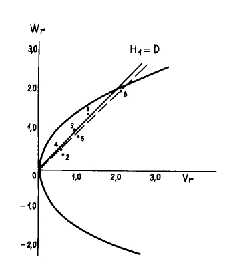The Wr + Vr graph for lycopene content inheritance
shows that it is dominant. The parents are situated
around the regression line (see fig.) according to their
number of dominant or recessive genes.
The cultivars Caro red (2) and Moneymaker (4),
which have a low lycopene content, posses the largest
number of dominant genes, while L. cheesmanii typicus and
the line Violet, the largest number of recessive genes. It
is evident that low lycopene content is controlled by
dominant genes.
Breeding for lycopene content is therefore com-
paratively slow and a component having a larger
number of additive genes with high lycopene content
should be included in the program.
Falavigna, A., and G. P. Soressi Birdsnest
phenotypes as related with sundwarf
genes.
An allelism test between mimic birdsnest
phenotypes from different sources has been
made. All the phenotypes considered are
characterized by a progressive shortening of
internodes strictly dependent upon the intensity of sun light as the original sundwarf (sd) mutant.
The obtained F1 data, together with those of the F2, F3 and F4 progenies of the cross 429 x 387,
evidence the existence of two sundwarf genes (sd-2, sd-3), the first of which is incompletely
recessive, interacting with each other and with sp and br Mendelian factors. As a consequence of the
environment and genetic background influences, the segregating progenies bring about a range of
phenotypes going from the rosette to the nearly normal habit. The well known birdsnest
phenotype (TGC, 1966) is then recognized due to the interaction of the genes sd-2, sp and br; the sd-
2 gene is likely to be the same or an allele of the original sundwarf (sd) mutant. The checking of the
allelism between sd and sd-2 phenotypes and the screening of the segregating progenies is in progress.
Methods. In most experiments the lower three
leaves of plants at the fourth true leaf stage
were inoculated with race 0 of the virus. After
24 h the plants were given temperature
treatments of 320 or 350C for
Kopliovitch, E., N. Kedar, and Nira Retig
Genotypic and environmental effects on
heat-necrosis
of
heterozygous
TMV-
"resistant" lines.
24 or 48 h. The disease index (D.I.) reflected the number of plants infected and the severity of
infection, where O=healthy, 1=1 to 10 systemic necrotic spots, 2=more than 10 necrotic spots,
No navigation control above? Click here!


